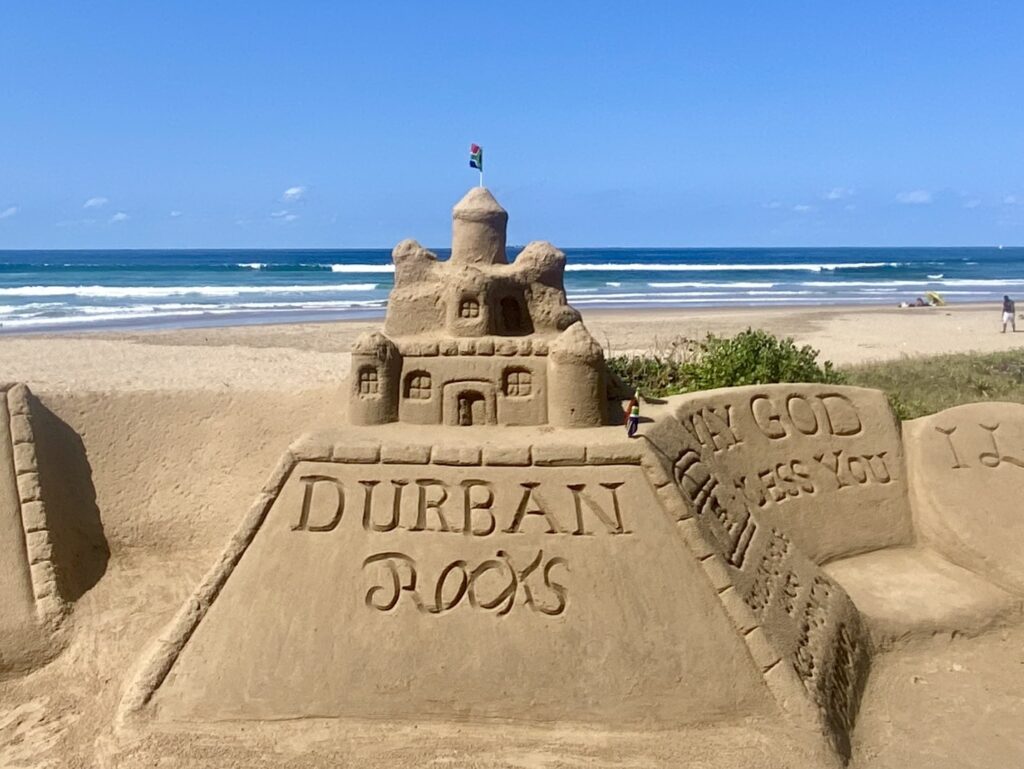
Durban is a coastal city on the Indian Ocean, in the southeast portion of South Africa. The port is large, and there is a long series of beaches stretching both north and south of the city. We arrived from our road trip through the Panorama Route. The highways connected nicely in Durban and we travelled through the city to our Airbnb, in a neighborhood aptly named Durban North. Separated from downtown by small bridges over a river that feeds into a brackish lagoon, it was far enough away culturally that our host jokingly said you need a passport to go downtown. We found that often in South Africa: travel a mile and the feel of the neighborhood can change dramatically.
I really enjoyed our apartment. It was within walking distance of the beach, and you could hear the pounding surf while sitting on the deck. Upon check in, it became one of my favorite places we have stayed on sabbatical. The owner provided a fully-stocked kitchen with some breakfast items included, a large tv with Netflix, and a spacious modern shower. We would also receive visits from time to time from the foster kitties downstairs.

We spent two weeks in Durban exploring the city and the coast. But autumn had arrived in the Southern Hemisphere, and over the first few days we hunkered down to avoid the battering rain and cool temperatures.
Here are the highlights:
Durban Botanic Gardens
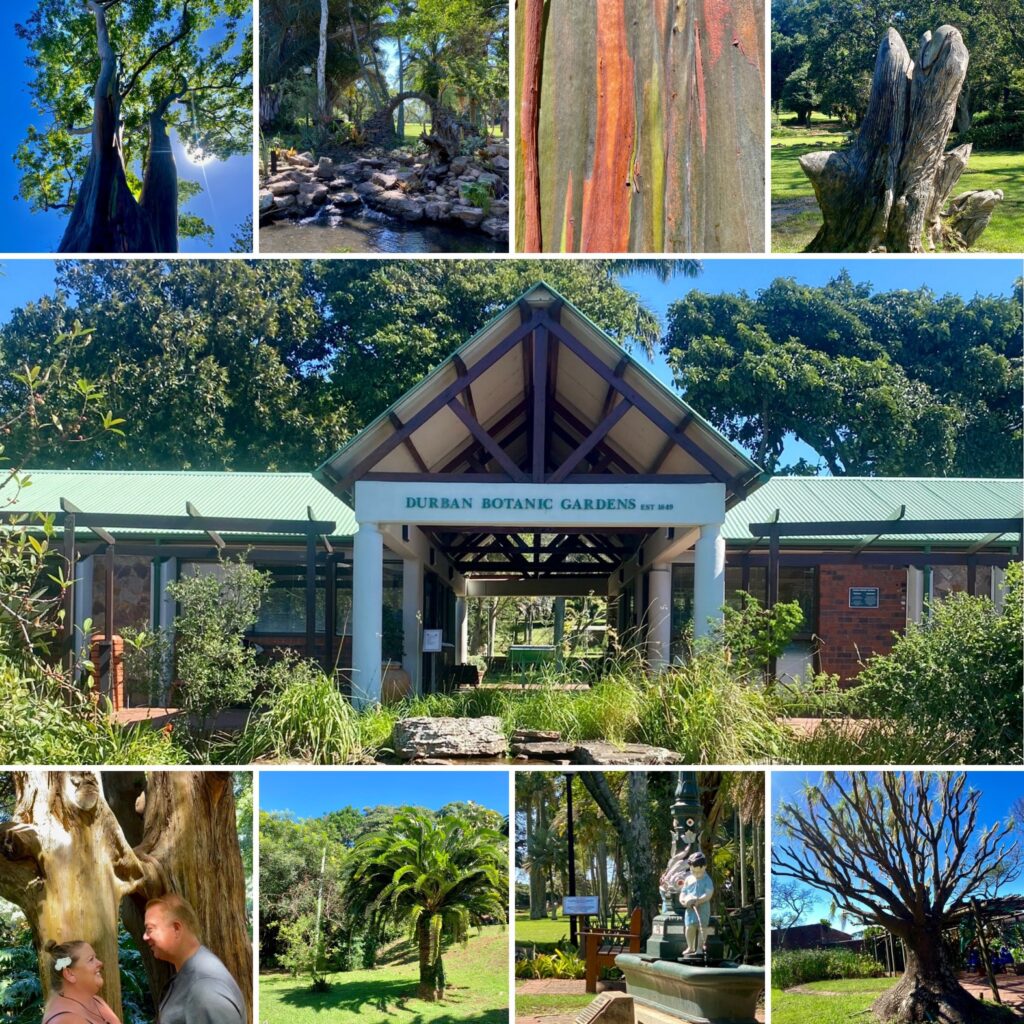
Free to enter, although the entrance was a bit hard to find (head to the northeast corner, and there is a driveway heading south to the parking lot). It ended up being one of my favorite activities. At the entrance was a nice coffee cart, and a gentleman providing golf cart tours for a small charge. It was a lively 30-minute drive around the various sections of the garden. As he put it, the garden is full of illegal plants: mostly-foreign specimens that are no longer legal to grow in South Africa. They also grow rare plants for transplantation to other gardens, and even for roadside plantings. It is the oldest botanical garden in Africa and a lovely place to visit while in Durban.
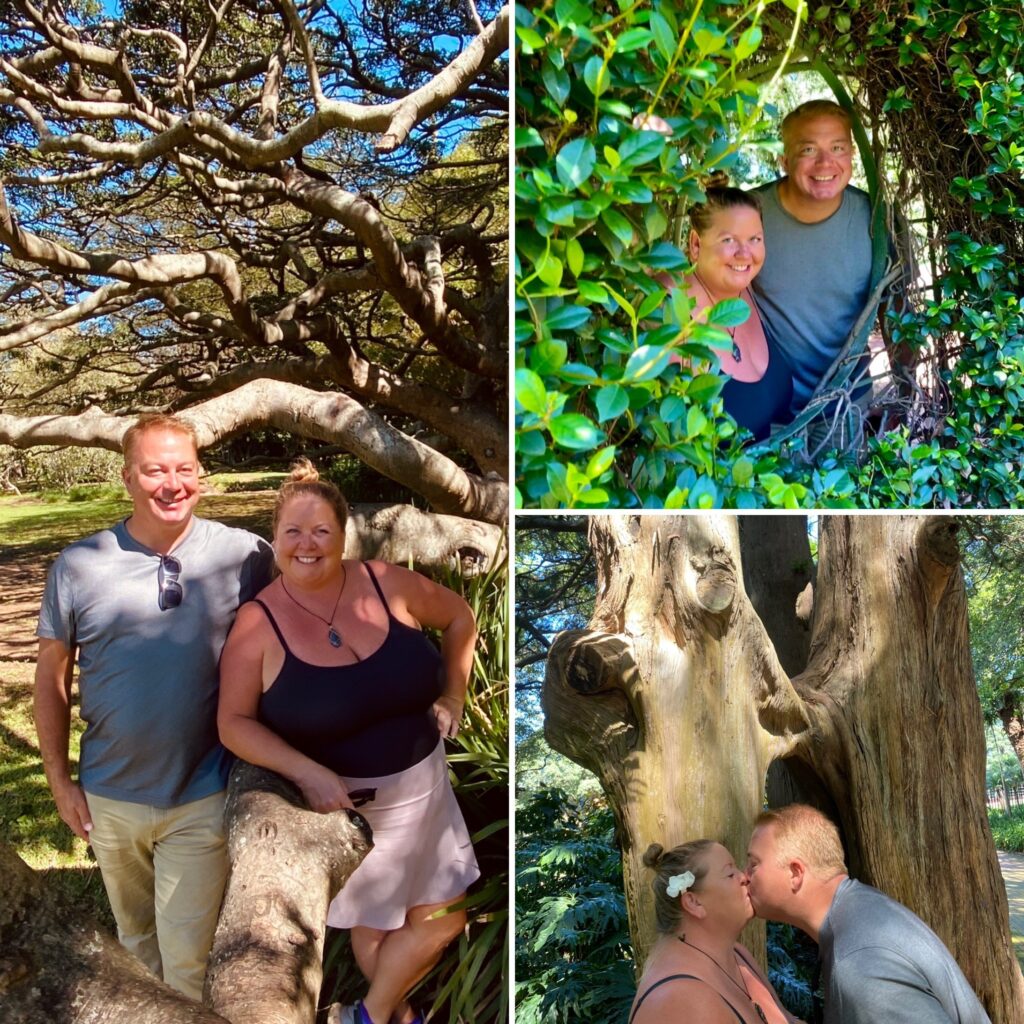
Campbell Collections

This museum is also hard to find, as there is no signage on the outside. We emailed in advance to make sure they were open. The location on Google Maps is correct, and entrance is granted at the security gate at the driveway. Located in a 1914 mansion, this museum is filled with artifacts of Zulu and other native people in the area, an attempt to preserve their culture as colonization was changing and destroying it. During our visit, we were the only patrons. Because we had emailed ahead, a staff member was ready to provide an outstanding tour of the old house and the collections of traditional South African garments, tools, beadworks, and more.
KZNSA Gallery
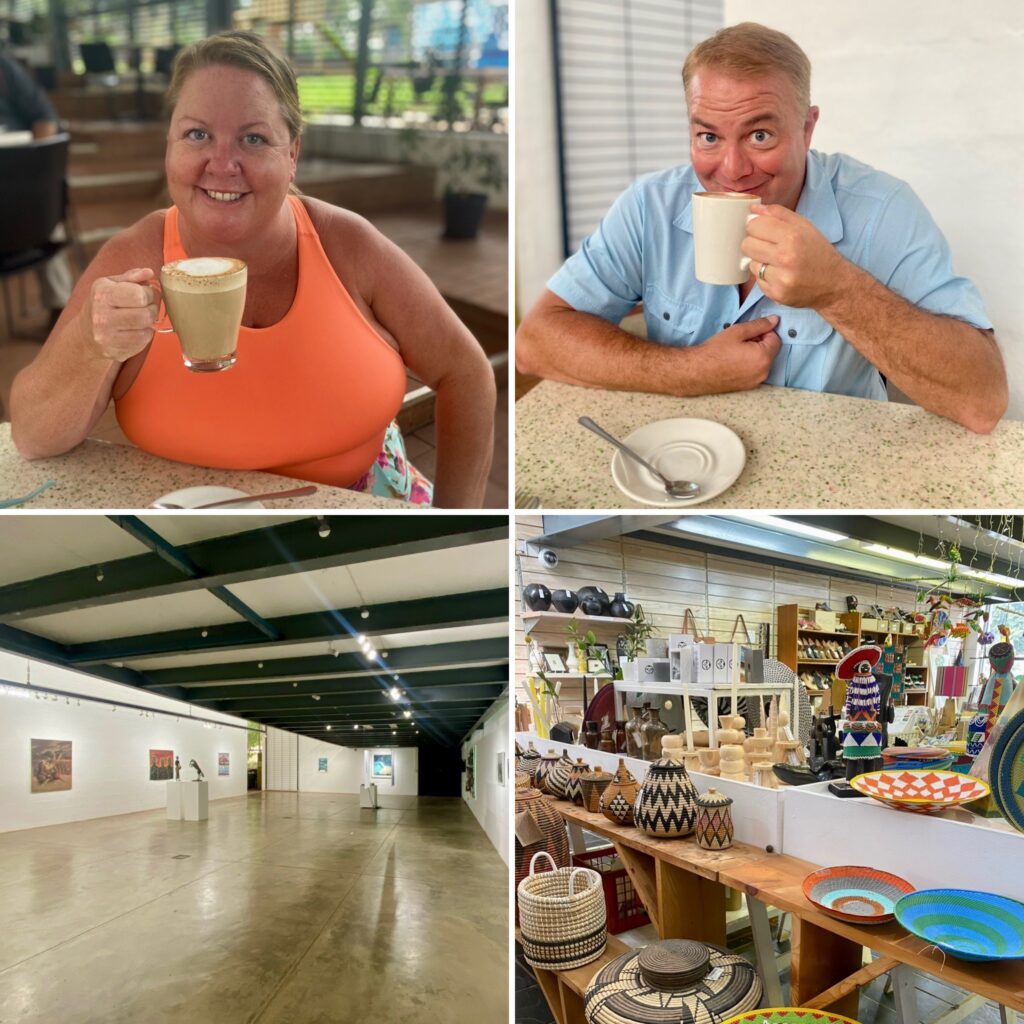
This is a small art gallery with contemporary exhibitions that change regularly. Admission is free, and there is also an excellent café. So this visit was more like a tasty brunch with a side of art once we had our coffee and breakfast.
Greyville Racecourse

Bunny chow is an Indian curry served in a hollowed-out loaf of bread (instead of over rice). A specialty of Durban, would you have guessed that one of the best examples is served up at a bar at the horse track? We were incredulous but gave it a try. Early in the season and on a weekday, it was a sparsely-attended day at the races. But we enjoyed standing in the sunshine and rooting for the horses that we had bet on. The pear-shaped horse track is enormous and well-manicured: there is a golf course on the infield!
Kingsmead Cricket Grounds
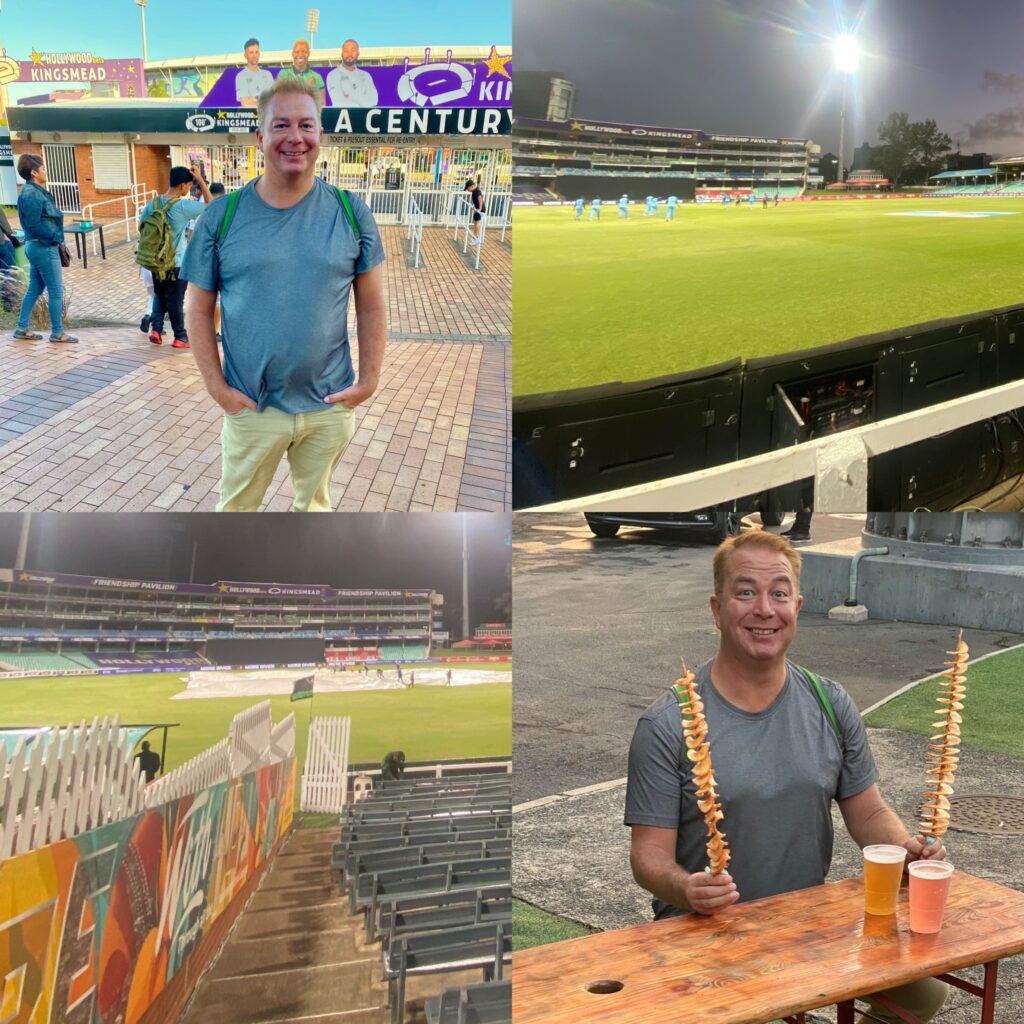
Our big sports day continued. After we played the ponies, we headed to the nearby stadium to watch a cricket match. It was my introduction to cricket and mostly had a good time. Since it was a T20 match, the timing was similar to baseball (three hours), but I found the scoring to be more confusing. A sudden rain shower shortened the match, and when it resumed, the visiting team had a short time to go all-out to try to score enough runs to win. That created some drama as they started successfully swinging for the fences, but they came up just short and the home Dolphins won in the end!
Wine Tasting
As you all know, we love to taste wine everywhere we go. But our focus on this South Africa trip was the east part of the country, and wine country is generally in the west. We did visit a lovely wine store in the northern suburb of Umhlanga called Buxton’s Wine Store. In our travels, we have found that while there can be good wine in grocery stores, there is not as much interesting wine in grocery stores. So we go to wine bars and small wine shops instead.
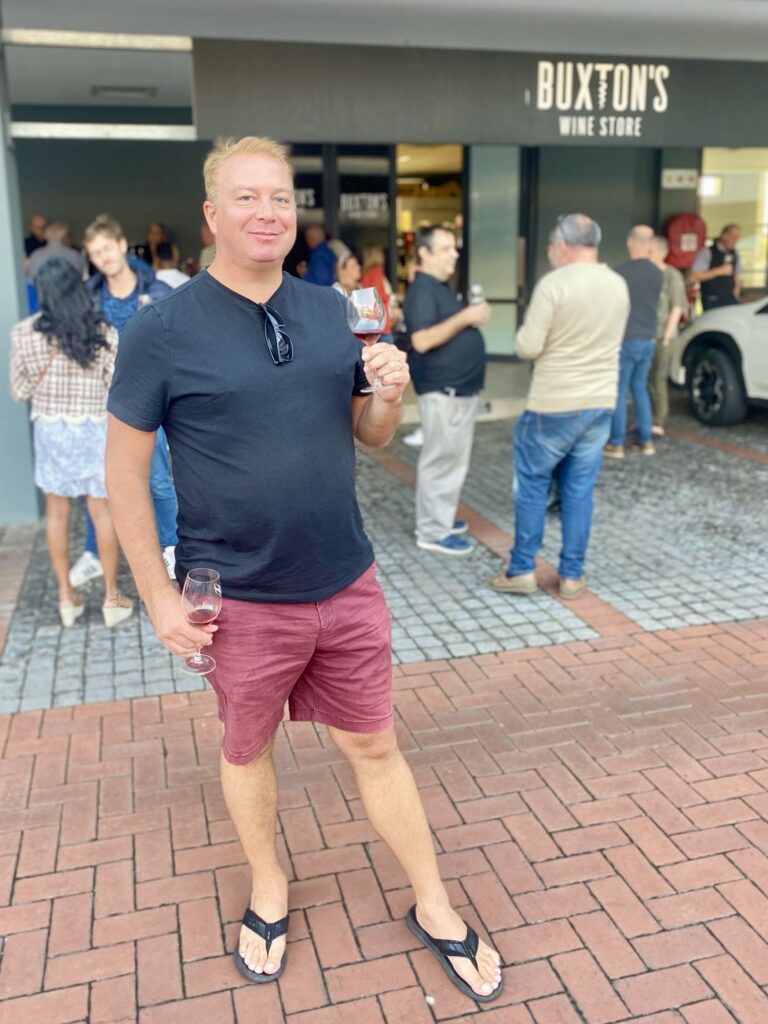
Buxton’s was perfect! We went in and asked for five South African bottles:
- a pinotage that he could recommend (this grape has made notoriously poor wines)
- a pet-nat (aka ancestral method of sparkling wine)
- a Bordeaux-style blend (i.e., cabernet and merlot)
- a sauvignon blanc
- a chenin blanc
After a few minutes of discussion, he swiftly collected five bottles with an average price point of $11 USD. It was a perfect sampling of what we were looking to try in South Africa.
We were also invited to come back for a wine tasting from a small producer called Ataraxia. Of course we put it on the calendar and returned for a lively afternoon affair on the sidewalk outside of the wine store. The winemaker was pouring eight wines, including some very-limited runs like a skin-contact chardonnay. We picked up a bottle of cinsault to take with us.
On this trip we were not able to go west to Stellenbosch, but instead Buxton’s brought the wine region to us.
KZN Sharks Board Boat Tour

Durban’s beaches had shark attacks throughout the 20th century, with multiple attempts at excluding sharks using netting (a concept borrowed from Australia). The Sharks Board is charged with protecting swimmers from shark attacks, and also with educating the public about sharks. They offer an early-morning boat tour where you can watch the employees make morning rounds to check the equipment.
Tours must be booked in advance and only run if the weather allows for it. We connected with the booking agent via WhatsApp and were told that we would hear from them on Tuesday evening for a Wednesday tour. We did not hear from them, so we reached out late Tuesday night, and were told only that the weather looked windy all week. But then we heard from them again late Thursday night, asking if we wanted to go on Friday morning. In times of bad weather, you may end up only finding out at bedtime if you have to wake up early.
We arrived at Wilson’s Wharf just after sunrise. The directions to the boat were not clear to us or the taxi driver, and there was no signage for the tour. If you go, ignore the Google Maps directions. Turn into the first large parking lot for Wilson’s Wharf. It is marked PRIVATE and has security guards, but it is where you want to be. Then just walk out to the boat parking and look for the Sharks Board boats. There we found our pleasant and knowledgeable skipper, Frank.
We boarded the boat with one other couple and slowly made our way through the large harbor area as the sun continued to climb in the sky. Although we dressed warmly, the wind had died down and the morning sun was warming. The observation boat follows behind the working boat as their crew goes through and checks the equipment for captured sharks.
I had thought that shark nets acted like an exclusion fence to keep the sharks away from the beach. Instead, they are basically operating a large-scale fishing operation for sharks, with a combination of gill-nets and baited hooks. We watched the guys check the nets and hooks. They pulled out two small sharks which they held up for us. It is not catch-and-release. Here is a quick video of what it looks like when they pull the nets.
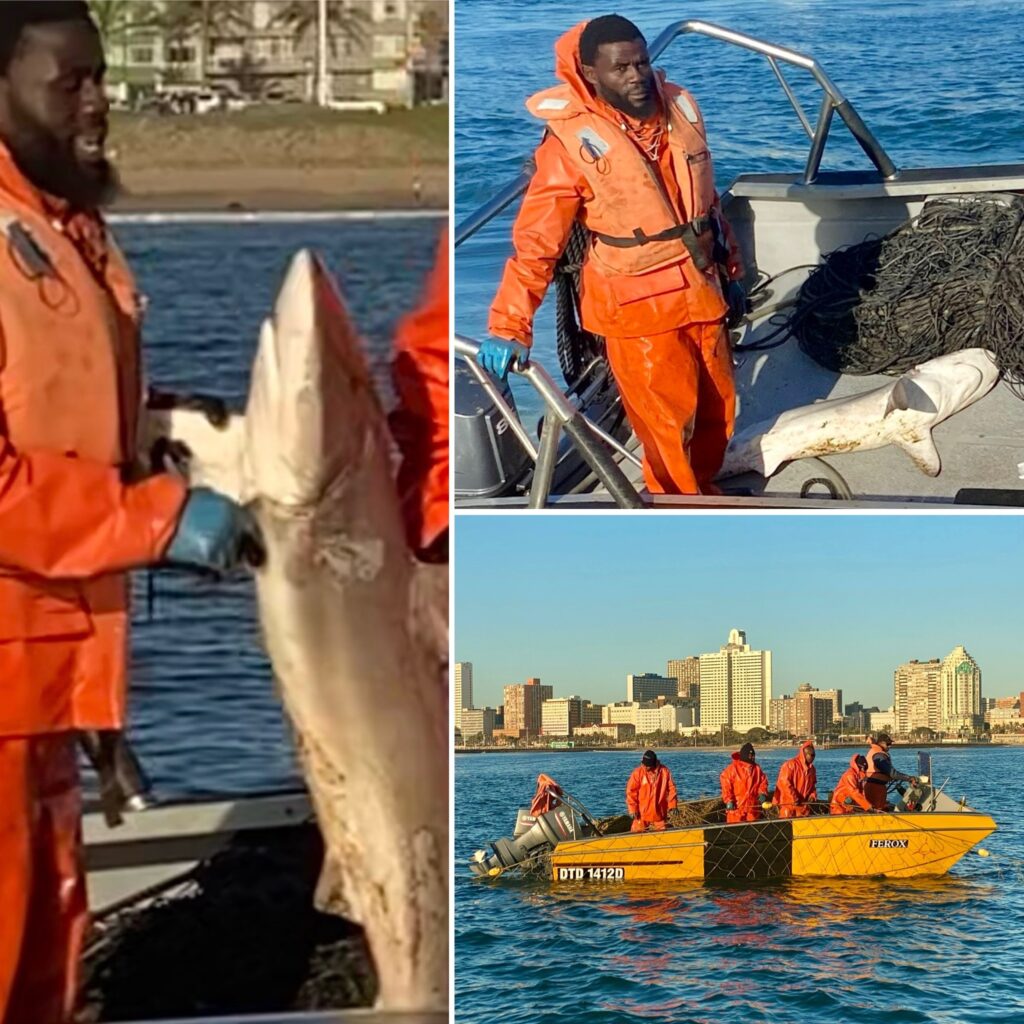
The observation boat is comfortable and provides a nice tour of Durban’s harbor and coastline. Before skippering the observation boat, Frank worked for years on the shark nets. He was a wealth of knowledge regarding the operations, as well as various elements of the local harbor and seascape. We experienced some large swells (about 5 meters / 15 feet), and saw some dolphins hopping through the surf.
It was under $20 USD/person, which is an excellent price just for a two-hour boat cruise, but also offered us a unique Durban learning experience.
Mpenjati Nature Reserve Beach
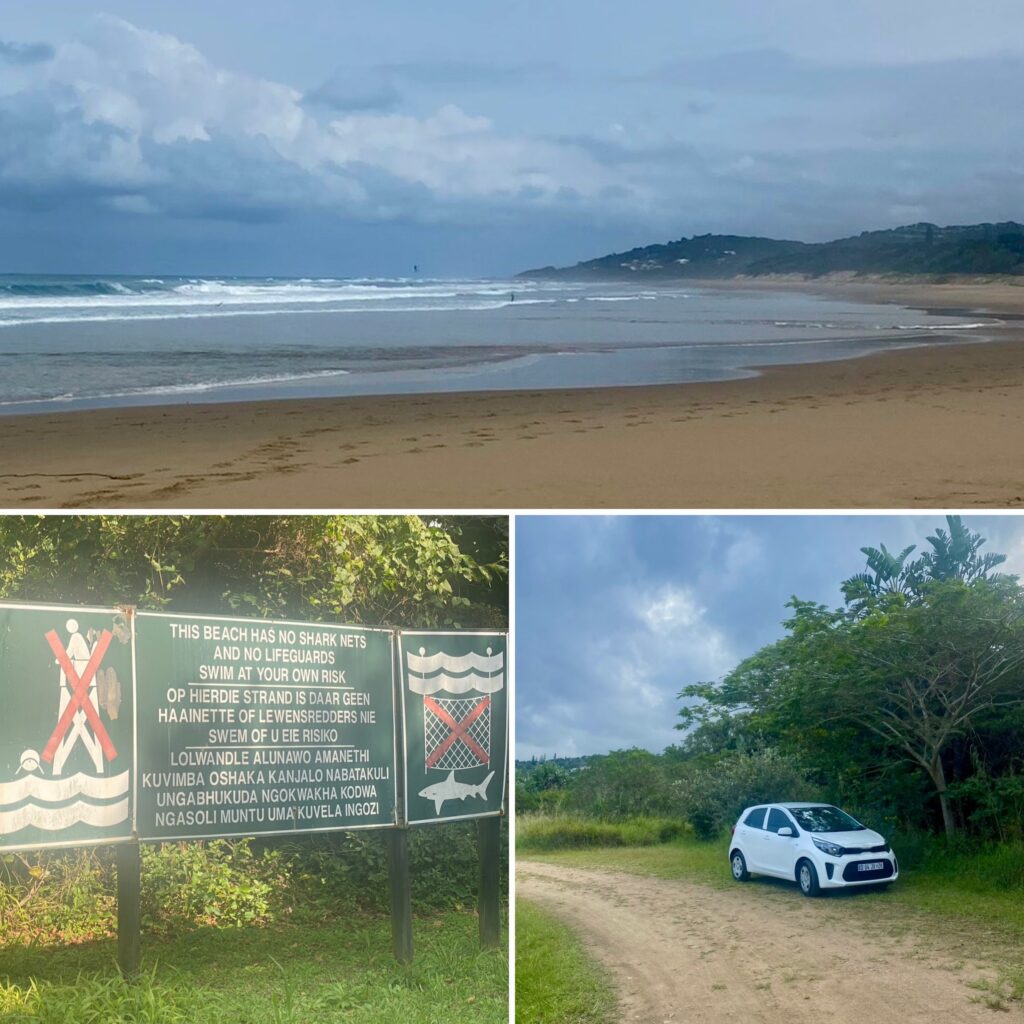
We waited for the forecast to improve and rented a car for a few nights so we could drive to see sights outside of the Durban area. The beaches to the south of Durban are known as the South Coast. There are a series of resorts and unremarkable beach towns, but the beaches are great. Even on a Sunday, this nature reserve offered easy parking, and a beach with no litter and almost no other visitors. The sun broke through the clouds and we sat for a couple hours watching the waves.
Typical for South Africa, once we left the highways, the roads were filled with potholes as well as construction detours. The road trip is not much for scenery, although further south there are some tourist attractions like coffee plantations.
City Hall
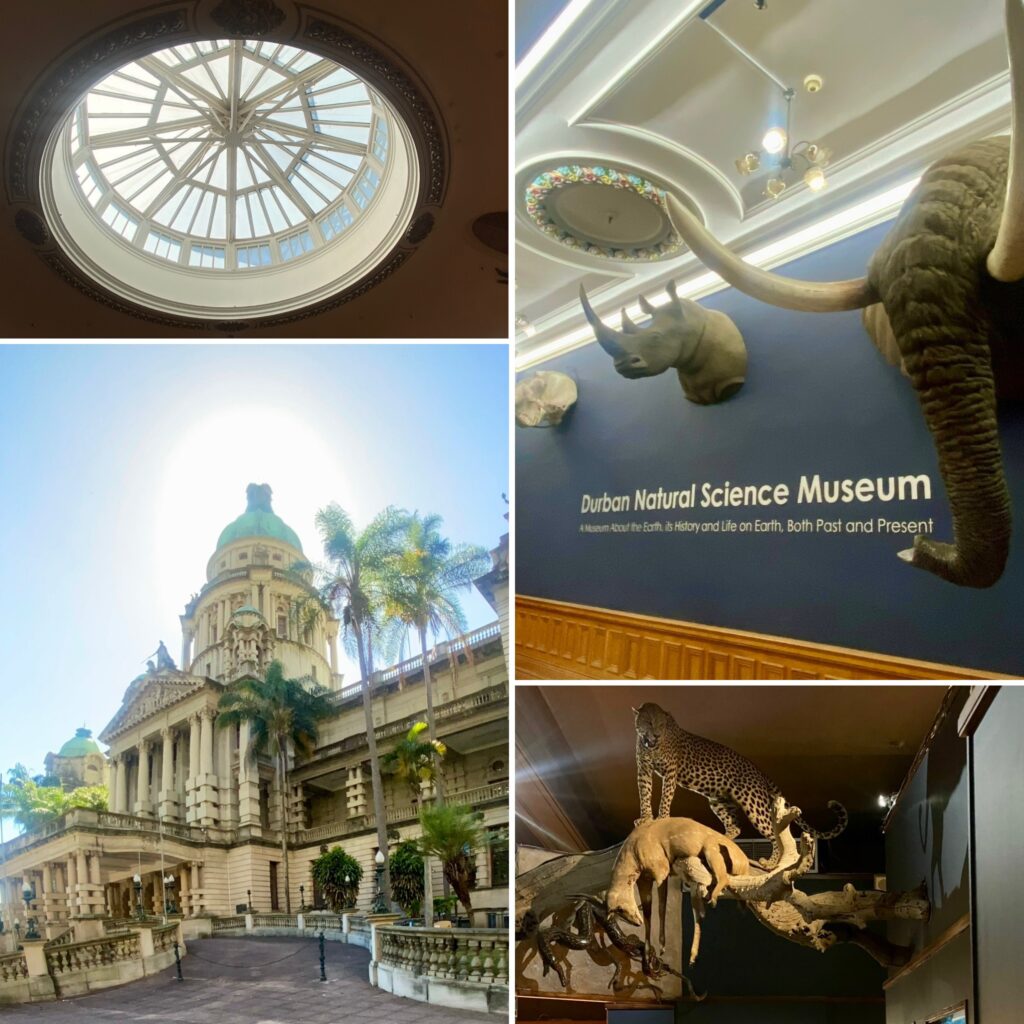
We went to City Hall not for municipal business, but because there are two free museums located in the stately building.
Durban Natural Science Museum
With a focus on the local flora and fauna, this was a nice companion to our earlier safaris. With many specimens on display in dioramas that show the natural settings, we were able to learn more about the animals of the area, including many that we had previously viewed. For instance, elephants need to consume more than 300 pounds of vegetation per day, which is why we usually found them eating. There is an entire section devoted to area birds, both past and present, as well as dinosaurs. And as we learned in Jurassic Park, dinosaurs have more in common with present-day birds than they do reptiles.
Durban Art Gallery
Continuing up the stairs at City Hall, the Durban Art Gallery has rotating exhibitions of contemporary art. Unfortunately, neither the Facebook nor Instagram are regularly updated with current exhibitions, but since admission is free, it is worth climbing one more flight of stairs to see what is there. The City Hall building itself is also worth walking through, to see the sun streaming through the dome down onto the dinosaur skeleton.
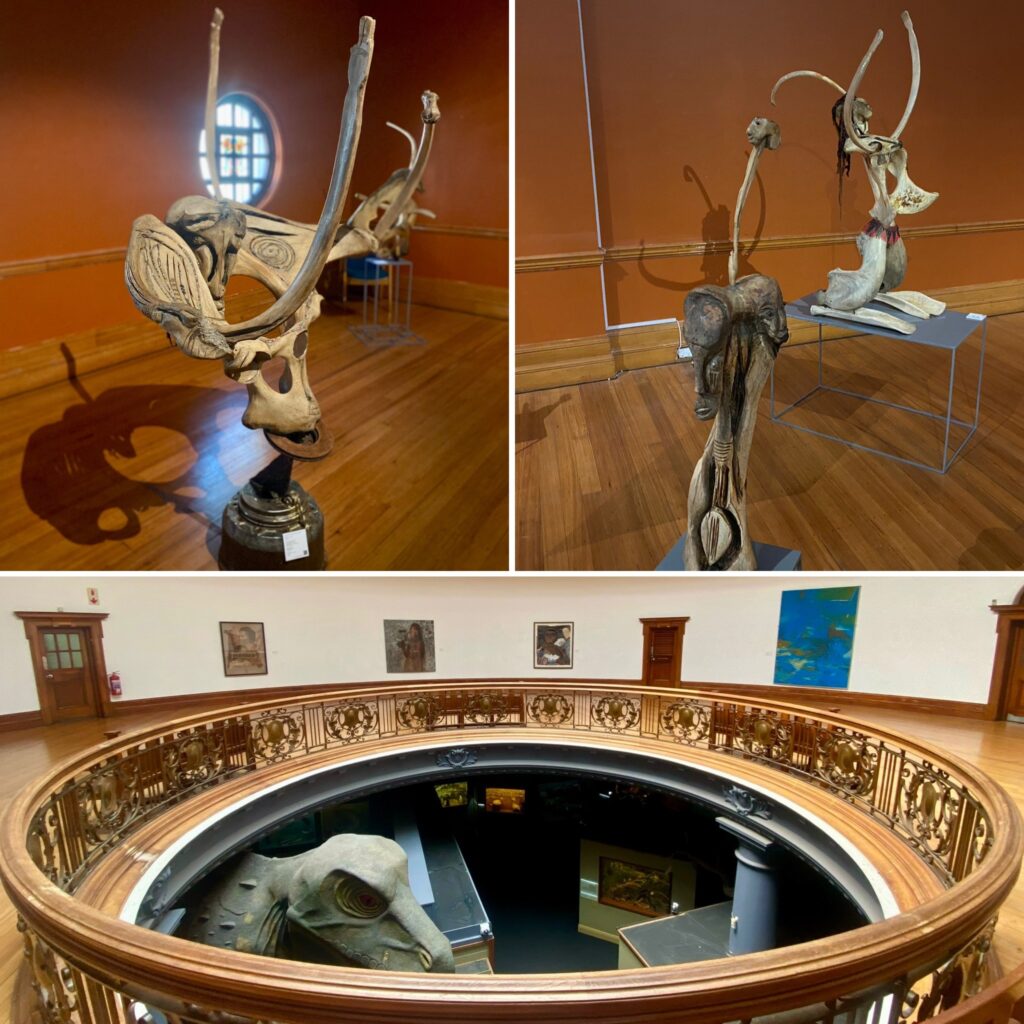
Playhouse Theatre Complex
Across the street from City Hall is the Playhouse Complex, which was renovated in the 1980’s to incorporate two historic theaters into one larger complex. We had read that the theater building was worth looking at, and that there was an abundance of art in the lobby. While the front doors were open, and there appeared to be some school groups touring and some folks sitting on benches in the lobby, we were stopped after a minute of walking by security guards. The guards seemed to think it was crazy to want to tour the theater or look at the art, and they said we were not allowed to go upstairs or into the theaters. Fine, we said, we would stay in the lobby. The guards trailed us closely as we spent just a few minutes examining things, then walked over to the box office, which was unmanned and provided no information. We would have been interested in either seeing a schedule of performances or tour information, but nothing was provided but a cold shoulder. (We later saw on their website that no shows were scheduled for the time that we were in Durban. We also saw a couple webpages suggesting that one can call in advance to set up a tour.)

Kwa Muhle Museum
About a half-mile away is Durban’s apartheid museum, located in the former headquarters of the city’s Native Administration Department. “Native” referred to the black population of the area, but the “Durban system” also restricted movement and employment of the large Indian population. The Spanish-styled building had a pleasant and cool courtyard, with exhibits reminding that the courtyard was used for those awaiting the fate of their applications for “papers” that would allow for access to the white-dominated city.
Admission is free of charge and there were numerous friendly employees who we had pleasant conversations with regarding Durban’s sights and history. We also helped answer some travel questions about the United States!
Victoria Street Market
Another short walk through the CBD leads through a retail area, where much of the sidewalk space is taken up with various people selling goods. There was one item that really caught my eye: multiple people were selling beautiful wrap dresses with puffed sleeves, in vibrant patterns. I browsed through at least a dozen separate racks looking for the right fit and colors but didn’t find what I really wanted. Although at first glance they all seemed to be selling the same dresses, the details were often different. Since we saw the same fabrics sold wholesale in the area, perhaps the dresses are also produced locally to individual patterns? We found the same dresses inside Victoria Street Market, and one shopkeeper gestured to her sewing machine and said she could make a dress to my measurements. Ultimately I decided that my bags are too full to add another dress. But if I ever go back to the area, I would buy one!
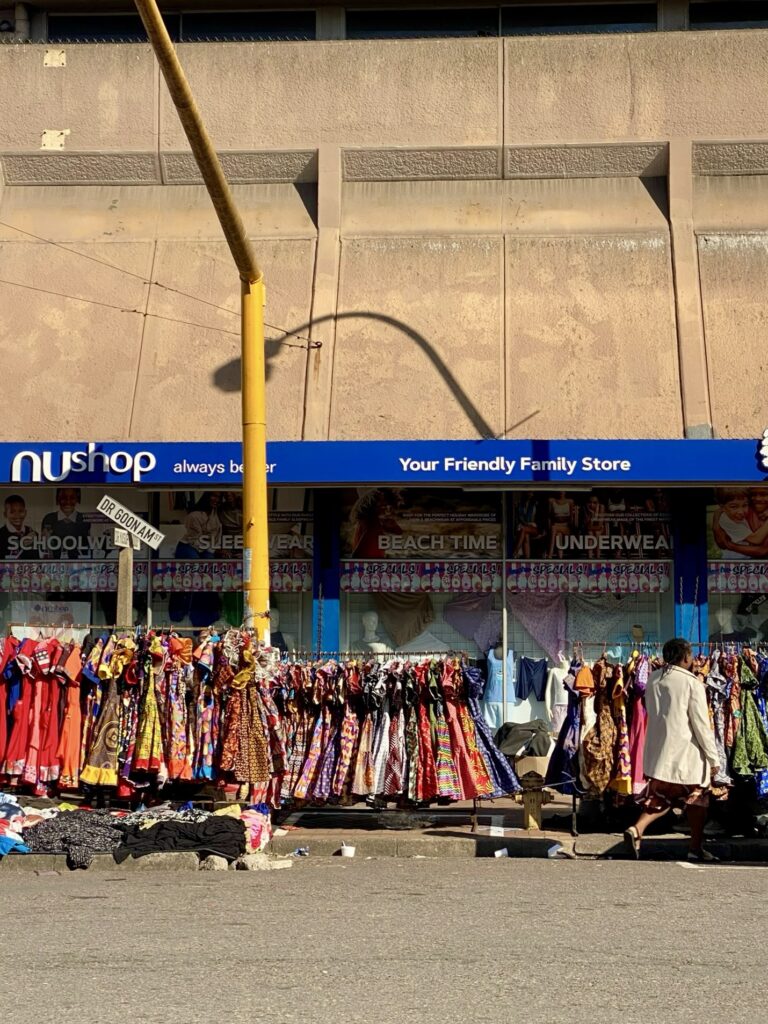
The market has the usual curio and souvenir shops, but the main reason we were there was spices. We had seen some interesting travel videos where tourists had opportunities to taste various spices, including all the makings for a Durban curry. We ended up meeting a nice gentleman at Madari & Sons, a shop around the corner from the main walkway (Shop S53). He led us through a tasting of the spices and mixes offered in his shop, and we bought several items at a very good price. Everything could be custom-mixed and were offered in various sizes. A recipe book was included so that we knew what to do with the various items, although Corey plans to use jeera (cumin) and peri-peri peppers to cook a South African version of chili con carne.
Pro tip: before spice shopping in any country, visit the grocery store first to see the prices. That way you know the going rate for the things you want.
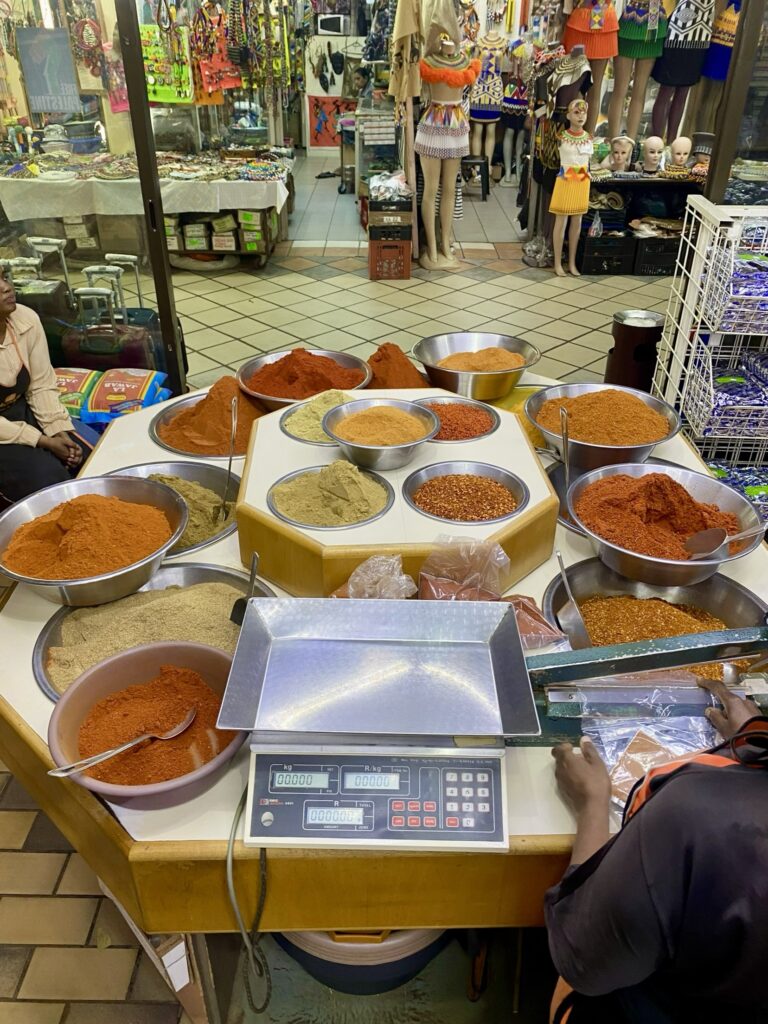
Food

Speaking of spices, let’s talk about food! We wanted to make sure to both have some of our South African favorites, as well as try the Indian-influenced Durban curries.
Bunny Chow
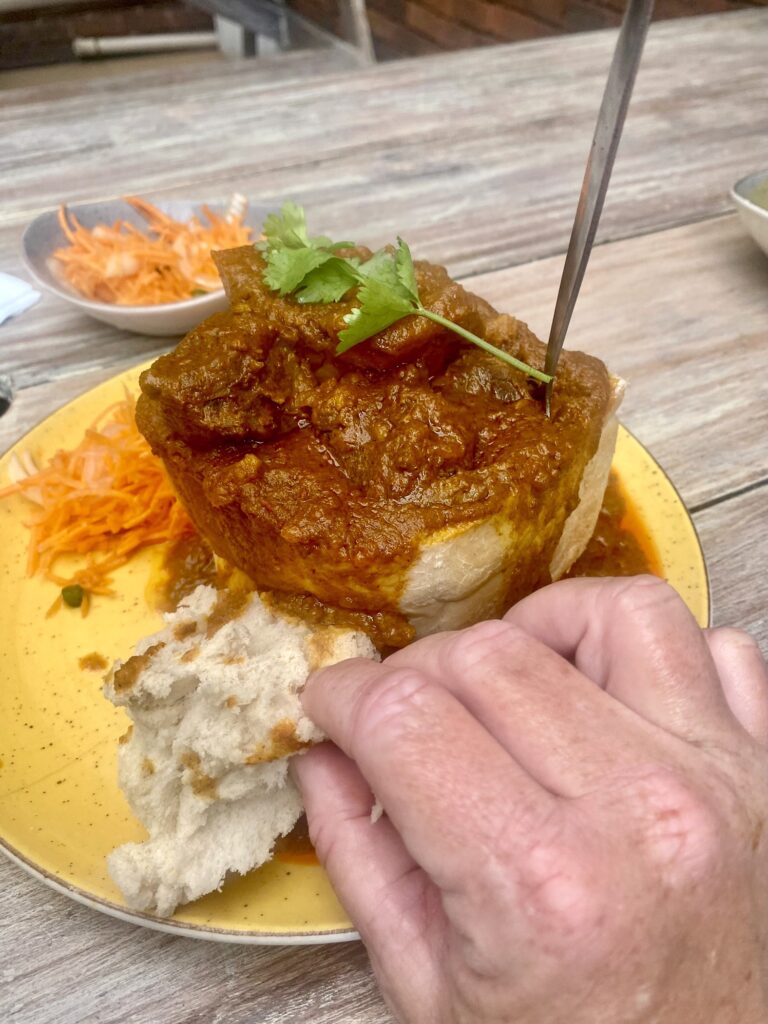
Discussed above, this is a Durban curry (usually mutton) in a loaf of bread. Completely different flavor, but similar texture to chowder in a sourdough bread bowl.
Joop’s Place
We wish we had discovered this restaurant earlier in the trip for their lunch specials. From Tuesday through Thursday, a list of lunch items is around $5 USD, including certain steaks, their burger, or their delightful Southern-USA-style chicken sandwich. They have an in-house meat counter, and steaks are available grilled or pan-fried (each in various fashions). They focus on steak and they do it well.

Grocery Stores
Grocery stores typically have hot savory pies. In Durban, many of them were curry-based, but there were also the usual options like ground beef (savory mince) or pepper steak. Overall the pies in New Zealand are better, but we appreciate any country that has hot pies ready-to-go!
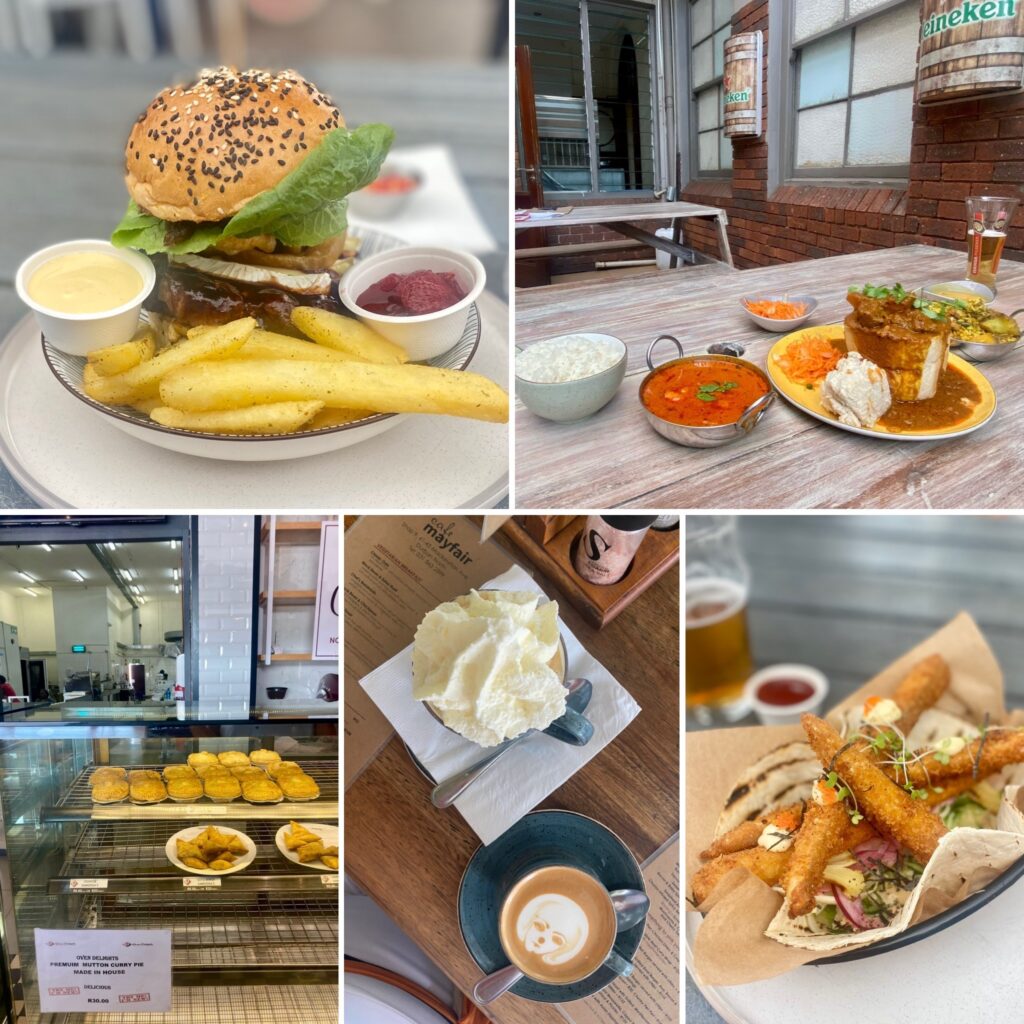
The meat sections in South Africa were plentiful. Beef is cheaper in Argentina, but South Africa had more options than we have seen anywhere else: ostrich, venison, wildebeest and other “exotic” animals are common. There were usually dozens of varieties of flavorful sausage and dried meats.
Final Thoughts
Durban was a nice stop on our South African road trip, but I would not go out of my way to visit again. This is certainly not due to the people or their hospitality, which we enjoyed immensely!
We had Durban on our list as a beach destination. There are many beaches, but not all of them are cared after and can have lots of rubbish around. The Indian Ocean was also quite rough.
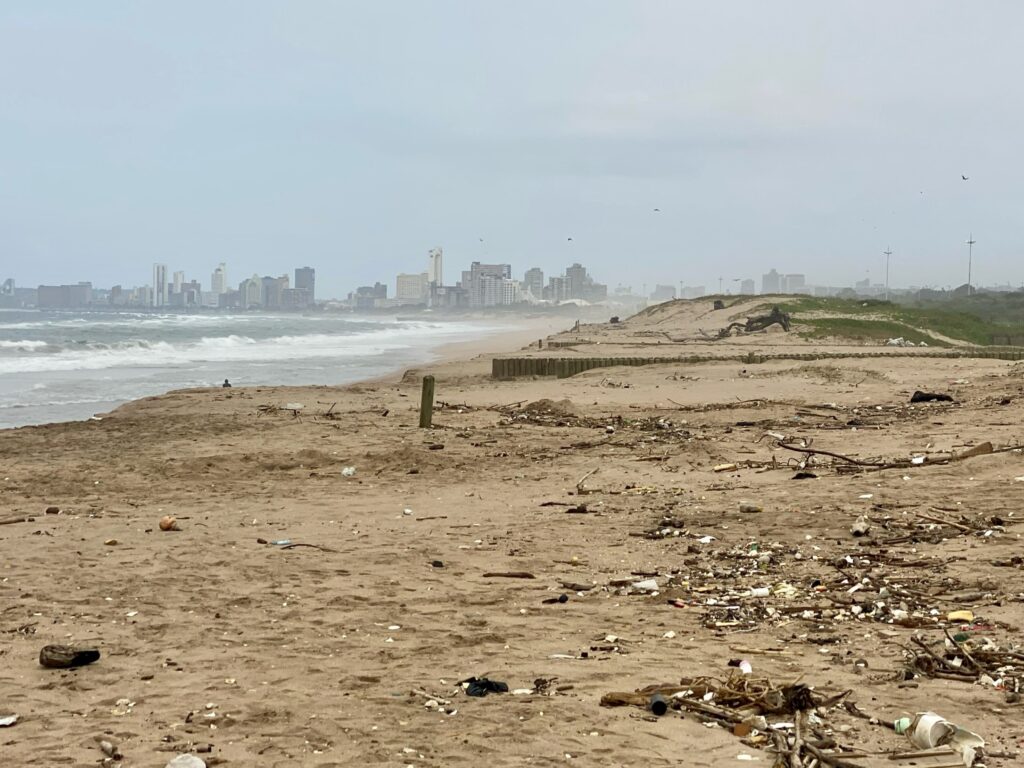
We believe the city needs some public investment. There is plenty of potential but much of the city seemed run down. For instance, Moses Mabhida Stadium was built for the 2010 FIFA World Cup, and looks great in the skyline (like from our boat tour). Guidebooks state that there are various experiences that can be booked at the stadium such as walking up and over the archway. But there are rumors that the stadium is structurally unsound, and much of what is hyped in the guidebooks has not returned since COVID.
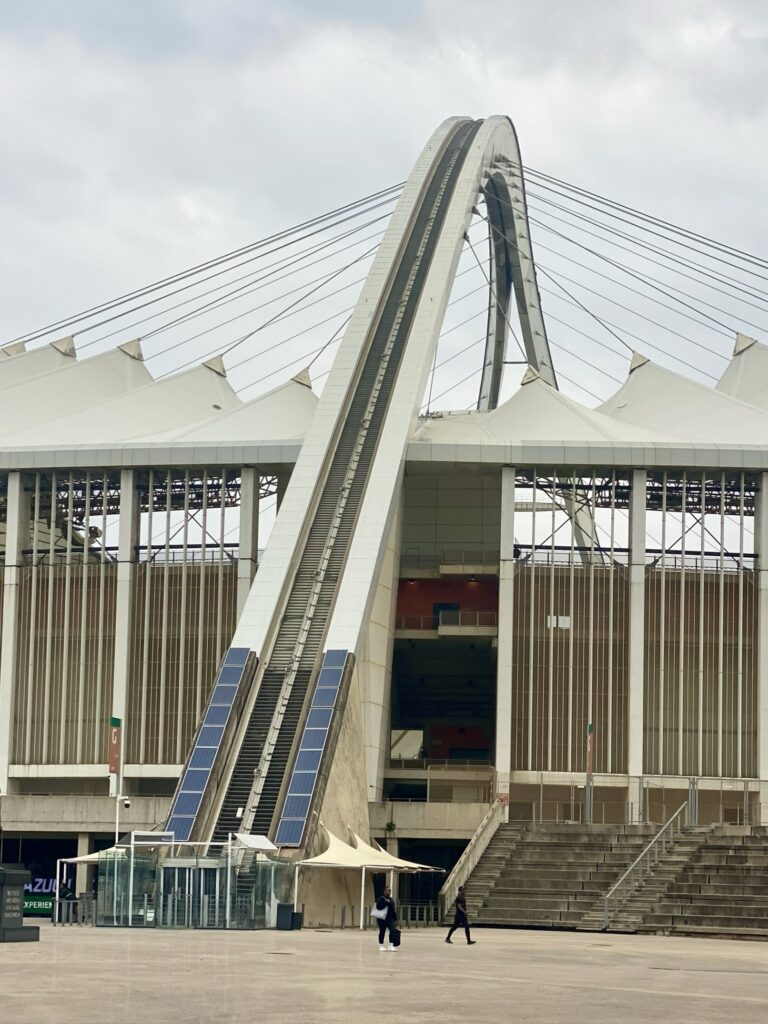
One of the biggest issues with booking in Durban is one that we have seen in other countries: lack of accurate official online information relating to attractions. For instance, the Mabhiba Stadium Events page is blank, although we believe the local soccer team played a match there when were in town. To find information on the horse track racing times we had to look on a separate betting site. And above we describe the issues with the shark boat. Was there more that we missed out on just because we could not find it?
